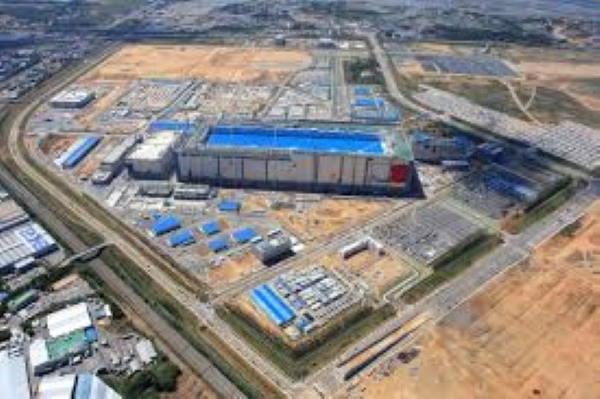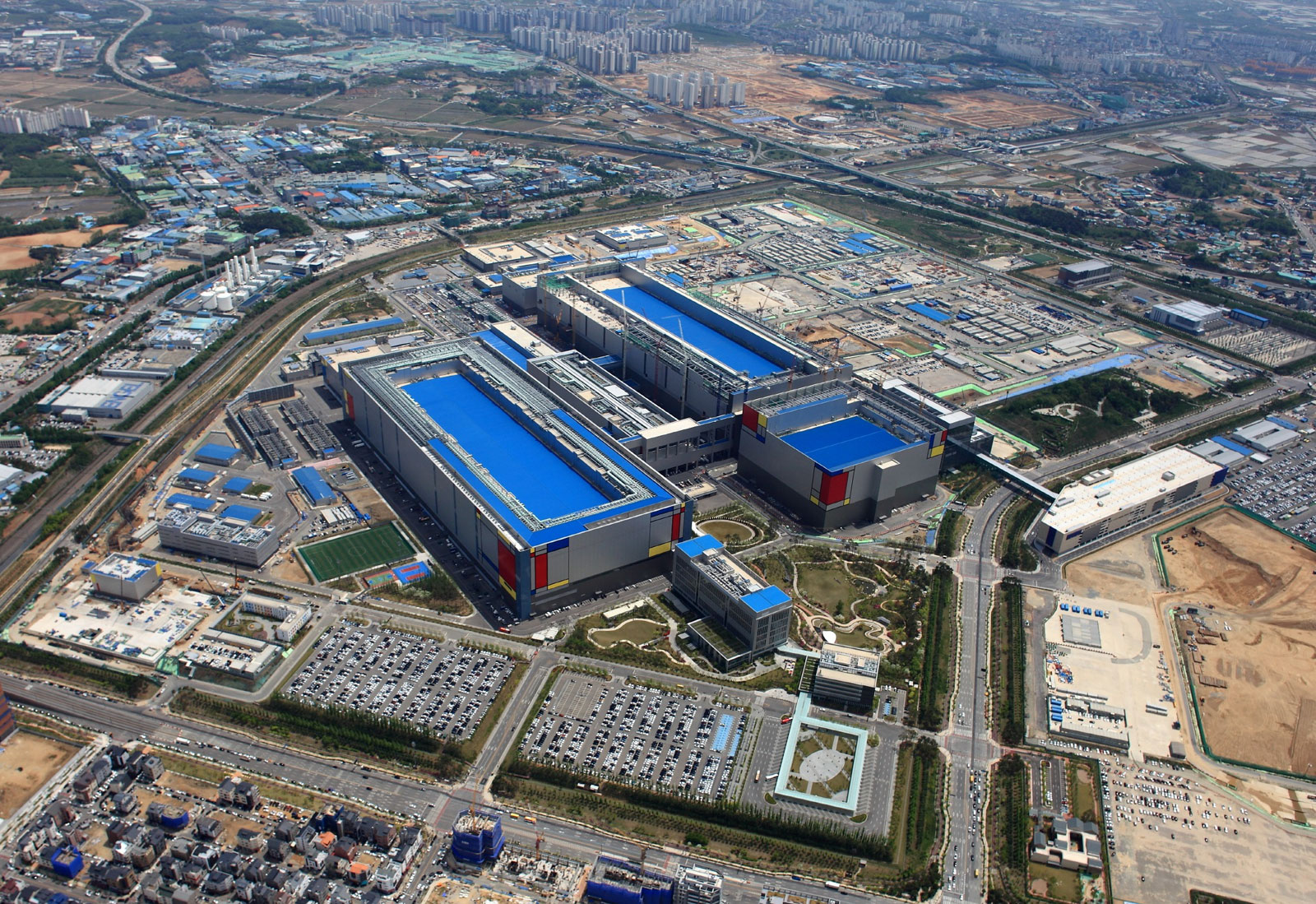The Pyeongtaek Samsung Electronics P2 facility is a semiconductor complex in South Korea with EUV-based foundry lines and memory production. Samsung undertook a major expansion of the facility between May 2020 and 2021. Aim for this was to meet growing demand for advanced logic chips using extreme ultraviolet (EUV) lithography at 5 nm and below. The line began operations in the second half of 2021. Samsung’s semiconductor manufacturing landscape is also expanding with the latest billion-dollar investment being in the new P5 line at Pyeongtaek being developed primarily for high‑bandwidth memory and next‑generation DRAM.
Factsheet for Pyeongtaek Samsung Electronics P2 Facility
Location: Pyeongtaek in Gyeonggi Province, South Korea.
Investment size: KRW 10 trillion (approx. US$8.1 billion) for the EUV foundry line.
Technology node: EUV-based 5 nm and below.
Target markets: 5G, high-performance computing (HPC), AI, other advanced logic applications.
Initial capacity estimate: Around 15,000 chips/month during early production.
Importance: Part of Samsung’s “System Semiconductor Vision 2030” to expand foundry leadership.
Project Timeline
May 2020: Samsung announces the construction of the new P2 EUV foundry line in Pyeongtaek for sub‑5 nm logic.
Mid‑2020: Groundbreaking begins. Clean‑room construction at P2 starts.
2H 2021: Start of full EUV foundry production at P2.
Late 2021: P2’s NAND/NAND flash production line also begins expansion.
2025: Samsung invests in broader Pyeongtaek campus expansion, including the P5 memory-chip line.

Samsung Electronics Expands Foundry Capacity with New Production Line in Pyeongtaek, South Korea
Reported August 14, 2021 – Samsung Electronics, a world leader in advanced semiconductor technology, is planning to boost its foundry capacity at the company’s new production line in Pyeongtaek, Korea, to meet growing global demand for cutting-edge extreme ultraviolet (EUV) solutions.
The new foundry line, which will focus on EUV-based 5 nanometer (nm) and below process technology, has just commenced construction this month. It expects to start full operation in the second half of 2021. It will play a pivotal role as Samsung aims to expand the use of state-of-the-art process technologies across a myriad of current and next generation applications, including 5G, high-performance computing (HPC) and artificial intelligence (AI).
Also Read: Siemens Gamesa to expand nacelle assembly facility in Taichung, Taiwan
The Pyeongtaek Samsung Electronics P2 Facility
“This new production facility will expand Samsung’s manufacturing capabilities for sub-5nm process. It will also support rapid response to the increasing demand for EUV-based solutions,” said Dr. ES Jung, President and Head of Foundry Business at Samsung Electronics. “We remain committed to addressing the needs of our customers through active investments and recruitment of talents. This will enable us to continue to break new ground while driving robust growth for Samsung’s foundry business.”
Following the initial mass production of the EUV-based 7nm process in early 2019, Samsung recently added a new EUV-dedicated V1 line in Hwaseong, Korea, to its global foundry network. With the new Pyeongtaek facility starting full operation in 2021, Samsung’s foundry capacity based on EUV is expected to increase significantly.
Samsung is scheduled to start mass production of 5nm EUV process in the Hwaseong fab in the second half of this year.
With the addition of the Pyeongtaek fab, Samsung will have a total of seven foundry production lines located in South Korea and the United States. These comprise of six 12-inch lines and one 8-inch line.

